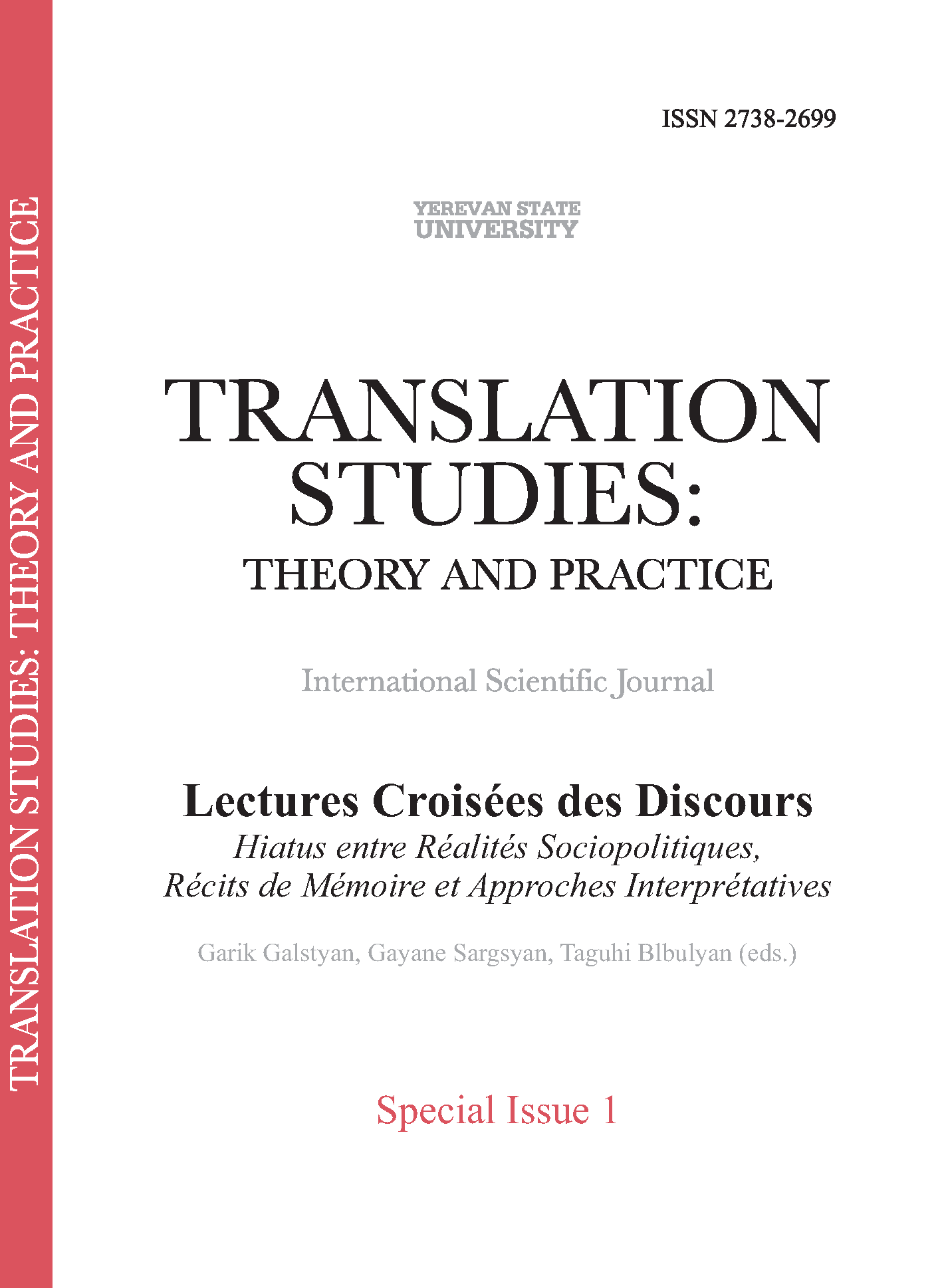“Albanization” of Artsakh Monuments as One of the Manifestations of Anti-Armenian Discourse in Azerbaijan։ the Example of Tsaghkavank
DOI:
https://doi.org/10.46991/TSTP/2023.SI.1.108Keywords:
Tsakhkavank Church, the inscriptions, anti-Armenian, Artsakh, AzerbaijanAbstract
The article presents the plan and spatial composition of the Tsakhkavank church in the village of Tsakuri, Hadrut region of the Republic of Artsakh, as well as the construction inscriptions in Armenian written on the walls. Today, the church is occupied by Azerbaijan, which, ignoring all the facts, is conducting a clear policy of eradicating the Armenian cultural and historical traces from the territory of Artsakh, threatening to eliminate and delete the inscriptions of the Armenian churches of Artsakh. The example of Tsaghkavank emphasizes the policy of falsification of regional history, which is a part of the institutionalized anti-Armenian discourse in Azerbaijan.
References
Barkhudaryan, Sedrak, Divan hay vimagrut’yan [Code des inscriptions arméniennes], n° 5, Institut d’archéologie et d’ethnographie de l’Académie des sciences de la RSS d’Arménie, éditions de l’Académie des sciences de la RSS d’Arménie, Erevan, 1982.
CBC TV : « Chleny albano-udinskoy khristianskoy obshchiny posetili Gadrut» [Les membres de la communauté crétienne albano-oudie en visite à Hadrut] https://www.youtube.com/watch?v=OqS26fM0z64 (consulté le 19/10/2022).
Hadjian, Avedis, “US Researchers Confirm 98 % of Cultural Armenian Heritage Sites in Nakhichevan Destroyed by Azerbaijan,” September 16, 2022. URL : https://hyperallergic.com/761723/cultural-armenian-heritage-sites-in-nakhichevan-destroyed-by-azerbaijan/ (consulté le 20/10/2022).
Harutyunyan, Varazdat, Haykakan chartarapetut’yan patmut’yun [Histoire de l’architecture arménienne], Luys, Erevan, 1992.
Hasratyan, Murad, Syunik’i XVII-XVIII dareri chartarapetakan hamalirnery [Les complexes architecturaux de Syunik XVIIe-XVIIIe siècles], Édition de l’Académie nationale des sciences de la RSS d’Arménie, Erevan, 1973.
Mkrtchyan, Shahen, Lerrnayin Gharabaghi patmachartarapetakan hushardzannery [Monuments historiques et architecturaux du Haut-Karabakh], Hayastan, Erevan, 1985.
Monument Watch: “Presentation of the Kanach Zham as Russian Orthodox Church and illegal rites performed there,” 15 July 1921. URL : https://monumentwatch.org/en/alerts/presentation-of-the-kanach-zham-as-russian-orthodox-church-and-illegal-rites-performed-there/ (consulté le 10/09/2022).
Navarra-Navassartian, Alain, « Stratégies performatives dans le discours nationaliste azéri sur le conflit du Haut-Karabagh », Hyestart, 21 juin 2020. URL : https://www.hyestart.net/post/strat%C3%A9gies-performatives-dans-le-discours-nationaliste-az%C3%A9ri-sur-le-conflit-du-haut-karabagh (consulté le 10/09/2022).
Report news Agency: “Working group set up to restore Armenianized Albanian temples”, February 3, 2022. URL : https://report.az/en/cultural-policy/working-group-set-up-to-restore-armenianized-temples-of-ancient-albania/ (consulté le 10/09/2022).
Telemetr: Rizvan Husseynov, post 367, 13/07/2021. URL: https://telemetr.me/content/rh_inside/post/367/ (consulté le 10/09/2022).
Wikipédia, « Cimetière de Djoulfa ». URL : https://fr.wikipedia.org/wiki/¬Cimeti%-C3%¬A8re_de_Djoulfa (consulté le 20/09/2022).
Downloads
Published
How to Cite
Issue
Section
License
Copyright (c) 2023 Lyuba Kirakosyan

This work is licensed under a Creative Commons Attribution-NonCommercial 4.0 International License.










